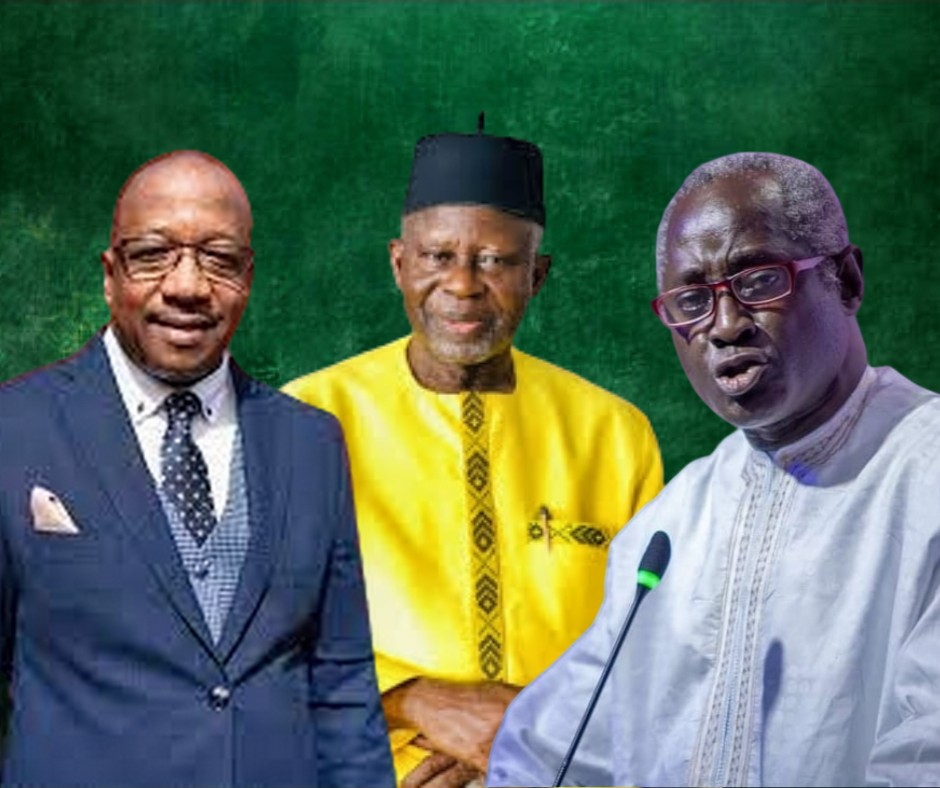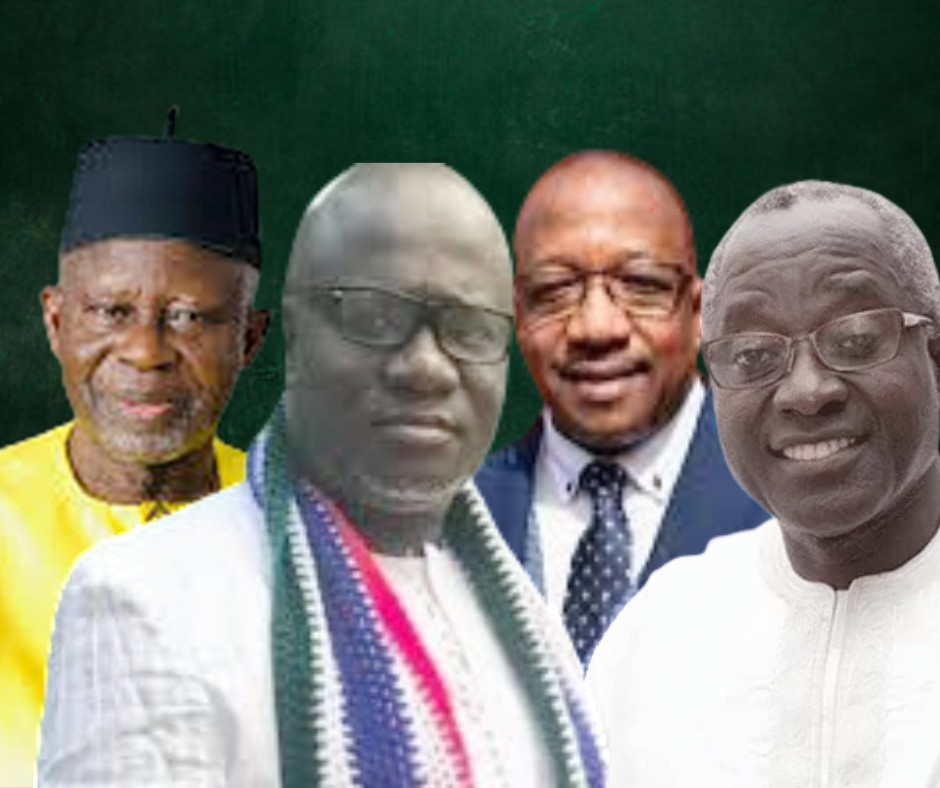
Since the emergence of multiparty politics in the Gambia in the late 1950s, leaders have defined the nature, direction, strength, and membership of political parties. Not only do they dominate but leaders also remain unchanged at the helm for either the entire life of the party or the leader himself. For example, Since its creation in 1959, Jawara remained the leader of PPP even after his government was overthrown in 1994. In 1992 at the party congress in Mansa Konko, he announced his intention to step down but never had to do so. In contract, leaders such as Senghore of Senegal and Nyerere of Tanzania and Mandela of South Africa had all resigned early even when their respective parties were in power.
In the Gambia, not only Jawara failed to give up the PPP leadership leading to the 1994 coup, but also individuals who founded other political parties have remained in office since inception. Just to mention a few: SM Dibba of NCP, Assan Musa Camara of GPP, Halifa Sallah of PDOIS, Mai Ahmad Fatty of GMC and Ousainou Darboe of UDP. This political culture is both undemocratic and unprogressive. Given that political parties are governments in waiting, it goes without saying that there cannot be democracy and progress at the national level if there is no internal democracy within political parties.
Building democracy requires conscious, deliberate and even radical decisions and policies with clear objectives. Political parties need to have laws and policies that set guidelines, requirements, targets, and objectives taking into consideration diversity, inclusion, participation, accountability, performance, and results. For instance, it is not enough to say the party does not discriminate women in defense of the fact that the party has less or no women parliamentarians or presidential candidates. A party should have recognized the sociocultural background of the society in the first place to realize that deliberate efforts and policies are required to create the enabling environment to encourage active participation and increased representation of women, youth, persons with disabilities, and minority groups.
Thus, in an era marked by rising demands for transparency, accountability, and inclusive governance, Gambia’s political parties must undergo fundamental reforms to remain relevant and responsive to the needs of democratic society, which they must build. For that matter, I propose a model of internal restructuring that offers a comprehensive blueprint to modernize political parties by aligning them with the principles of good governance, participatory democracy, and institutional professionalism.
Democratizing Party Structures
At the heart of the proposed reforms is a call to revise political party constitutions to ensure effective internal democracy, transparency, and accountability. Central to this is the introduction of term limits, with executive committee members, including the party chairperson, limited to two terms. This measure aims to prevent entrenchment of power and encourage periodic leadership renewal.
The reforms also seek to eliminate autocratic tendencies by abolishing the position of “Secretary General” or “Party Leader,” titles which I consider inappropriate for modern democratic parties. In its place, the party will be led by a Party Chairperson, elected every five years after every presidential election.
Choosing a Flag Bearer
Importantly, the Chairperson will not be eligible to contest as a presidential flag bearer, reinforcing neutrality and strengthening internal checks and balances. Rather, the Party Chairperson will guide and oversee the selection of a flag bearer and the nomination of other party candidates for National Assembly and local elections. The selection of these candidates will be conducted through primaries in which party delegates will vote.
Parties will introduce a running mate system even if not in the Constitution. A flag bearer candidate will identify an alternate gender for running mate as vice president. A person will not contest for more than twice for flag bearer.
A Streamlined, Inclusive Executive
The central executive committee should be limited to no more than 15 members, ensuring efficiency and focus. This body will be carefully structured to reflect gender parity, ethnic and religious diversity and inclusion, embodying the democratic values the party seeks to champion. The committee will assume a clear policy and decision-making role and include key portfolios such as Public Relations Officer (PRO), Finance, Fundraising, Campaign and Elections, Inter-Party Relations, Diversity and Inclusion, International Affairs Manager, Legal and Policy, and Party Building.
Policy Innovation and Government Oversight: Shadow Cabinet
A major innovation in this reform model is the introduction of a shadow cabinet, appointed by the chairperson and approved by the executive committee. These shadow ministers will develop party policies and monitor government decisions, thereby reinforcing democratic accountability and providing an alternative governance vision.
Strengthening Party Institutions
To ensure professionalism and sustainable growth, the reforms propose the establishment and strengthening of a party headquarters, staffed with hired professionals across specialized departments. These departments include Communications and Media, Research and Development, Recruitment and Membership, Diversity and Inclusion, Foreign Affairs and International Relations, Finance, Resource Mobilization, Legal Affairs and Policy Development, Campaigns and Elections Monitoring, Inter-Party Relations, and Party Institutional Building.
The headquarters, managed by the Chief of Staff, will produce regular financial, activity, and policy reports to enhance transparency and organizational learning. Regional offices, similarly, staffed by professionals, will decentralize party operations and strengthen grassroots engagement.
Diversity and Inclusion
To foster broad-based participation, the reforms call for the creation of vibrant wings for youth, women, and persons with disabilities (PWDs). These wings will serve as platforms for advocacy, leadership development, and mobilization, ensuring that marginalized voices are integral to the party’s agenda. Further, given the multi-ethnic and multi-religious nature of society, frantic efforts will be made to ensure the party reflects the social fabric of the country. The party will seek to attract and nominate representatives from minority ethnic and religious groups both for elections and in party leadership. Currently, the National Assembly has no Christian, Aku, Manjago, Karoninka and Mankagne representative thus highlighting the importance of diversity and inclusion for the attainment of republican and democratic ideals.
Digital Engagement and Public Visibility
Recognizing the power of digital communication, the party will establish a functioning website and maintain active social media platforms. These will serve as hubs for information, engagement, and public accountability. In this regard, there will be a need for effective media and social media monitoring and accountability to ensure decent and inclusive politics is promoted and strengthened. Media in general must serve and not destroy politics and society.
Conclusion
This snapshot of the reform blueprint presents a bold, forward-looking model for political party renewal. It seeks to transform political parties from personality-driven organizations into professionally-run, policy-focused institutions capable of contributing meaningfully to democratic development. By embedding transparency, inclusivity, and responsiveness at the core of party operations, this model lays the groundwork for a new era of political accountability and public trust in the Gambia.
For The Gambia, Our Homeland


